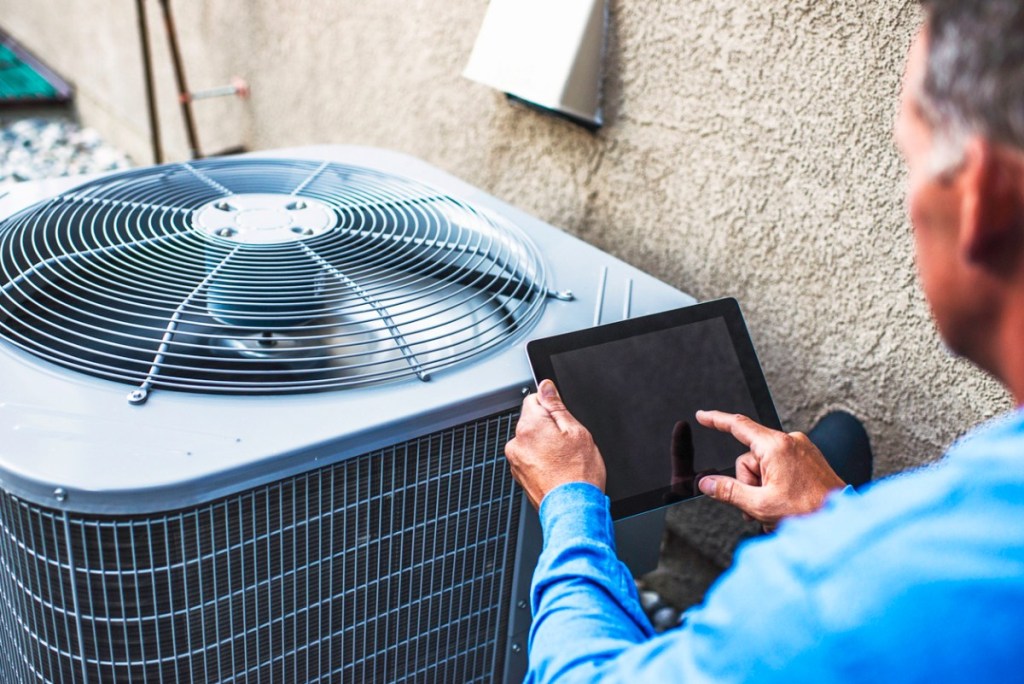Air conditioners are vital in many areas of the country. They improve the quality of life for millions of Americans through the long, hot summers.
For many of us, though, they are not used for almost half of the year. In many areas, there are stark differences between summer and winter. Taking the time to winterize your air conditioner can save you from expensive repair bills.
With the average HVAC repair costing over a thousand dollars, the need to protect your system is considerable. The rapid changes in temperature can cause significant damage to your unit. Freezing temperatures can damage the internal components like the air conditioner condenser.
7 Tips to Winterize Your Air Conditioner Unit
As long as you know how to winterize your air-conditioner unit, you will be able to enjoy cool air whenever you need it. Follow our tips to ensure you do everything needed.
1. Clean Your Air Conditioner
The first step in winterizing air conditioners is to remove debris.
During the fall especially, falling leaves and branches can accumulate on the top of your central air unit. Removing this debris is critical to preparing your air conditioner for the cold months ahead.
It is not just debris that can be problematic.
Make sure you clean vents and dust the air conditioner off as well. As temperatures freeze, any contaminant can cause damage to your air conditioner. Making sure your unit is cleaned and prepared is the first step you should take in winterizing your air conditioner.
2. Shelter Your Air Conditioner
Even something as simple as placing plywood over your air conditioner will help winterize it. This will keep snow and ice from accumulating on top of your air conditioner unit.
If you are in an area with strong winds you can anchor or weigh down the pieces of wood. The key is to prevent snow and ice from getting down inside your air conditioner.
Getting a cover for your air conditioner is important too. There are many covers available on the market.
Look for one that is the correct size as you do not want a lot of excess space underneath it. Anything that can allow ice, snow or small animals to invade your air conditioner is not helpful.
3. Install a Roof or Awning
In order to increase the protection of your air conditioner, consider having a roof or awning built off the home.
This will create a permanent barrier that will not only help winterize your unit but also protect it during the summer months. The cost of having such a structure built is small compared to the cost of repairing an air conditioner.
4. Use a Breathable Cover
While it may seem natural to want to protect your air conditioner with a plastic cover, do not. You will need to use a material that breathes and allows condensation to escape.
The expansion of water as it freezes can cause considerable damage to your air conditioner. Be wary even of commercial covers made of plastic.
5. Landscaping Around Your Air Conditioner
Planting bushes and shrubs around your air conditioner can be effective as well. Not only will this help you in creating a beautiful outdoors for your home, but it will shelter your air conditioner.
Protecting it from cold, moisture-laden wind is vital. Anything to provide additional protection will prolong the life of your air conditioner.
Consider the flow of water in your yard and ensure that you protect your air conditioner from potential freezing. Make sure that moisture flows away from the air conditioner, and not directly to it.
6. Don’t Forget the Pipes!
It is not just the unit that should be covered for winter.
The pipes running to and from the air conditioner are also in need of protection. Cover them or wrap them in an insulating foam that can protect them from the elements. This will prevent the fittings from becoming damaged and leaking, and the pipes themselves from breaking.
Not all the pipes that are vital to your air conditioner are outside the unit. The pipes inside can also be protected by applying foam or insulation.
While such protection must be removed before use, it can ensure that the components of your air conditioner remain undamaged all winter long.
Special care should be given to the T-joints of your pipes as well.
7. Inspect Your Air Conditioner Regularly
During the cold winter months, make time to go out and check on your air conditioner regularly. Ensure that no snow or ice is building on the cover, and make sure no small animals have found their way inside.
Detecting any potential issues and addressing them quickly is your best defense against a costly bill. It is easy to forget that the air conditioner exists until you need it. Don’t allow your unit to accumulate potential damaging debris and ice even if it is covered.
It may be necessary if you live in an area that experiences winter storms frequently to check more than once a month. In this case, always make sure the cover is secured and adjust it if necessary.
Keeping continuous coverage of your unit is one of the best steps towards winterizing.
If even after you’ve followed these tips and your air conditioner is broken, then you may need to consider contacting an AC repair company.
Precautionary Steps Are Your Best Defense
Now that you know how to winterize air conditioner units, you’re all set.
You won’t have to devote a considerable amount of time to winterizing if you do it right. Make sure that the unit is not turned on. You don’t want the occasional hot day ruining your air conditioner.
If you want added protection, locate the power supply or hire a professional HVAC repair person to turn off the power to the unit.
As with any aspect of your home, do not hesitate to seek our professional advice. An HVAC repair person can assist you with all of the steps above, plus have more tricks and tips for you to try.
We invite you to read more of our articles on how to take care of your home!





















